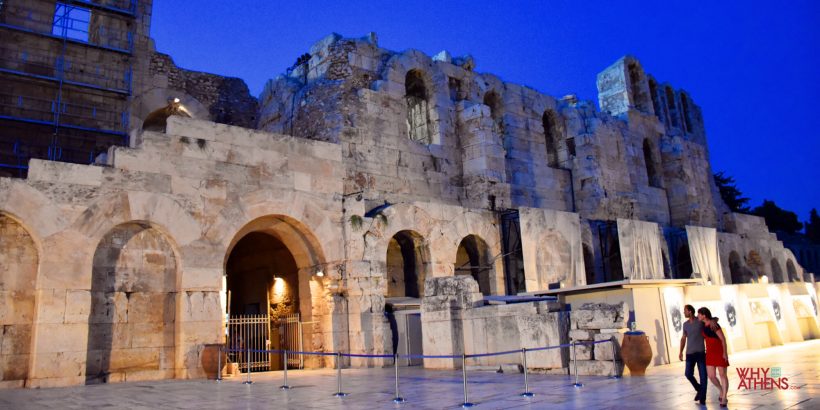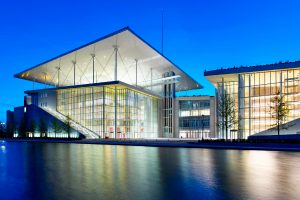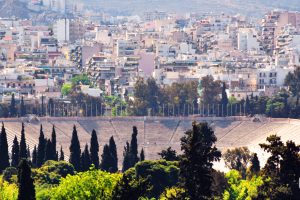One of the legendary sites that sits beneath the slopes of the Acropolis on the southwest side, is the stunning open-air theatre, Odeon of Herodes Atticus. When Pausanias, the Greek traveller and geographer from the second century AD, visited Athens during the reign of Marcus Aurelius, he described the Odeon theatre as “the finest building of its type”.
Check for the latest events on at the Odeon of Herodes Atticus here
In ancient times, Odeons were built for musical contests and this ancient stone theatre has gone on to host some of the world’s best musical performances during the last 60 years since its modern day re-opening, including Nana Mouskouri, Luciano Pavarotti and Frank Sinatra to name a few.
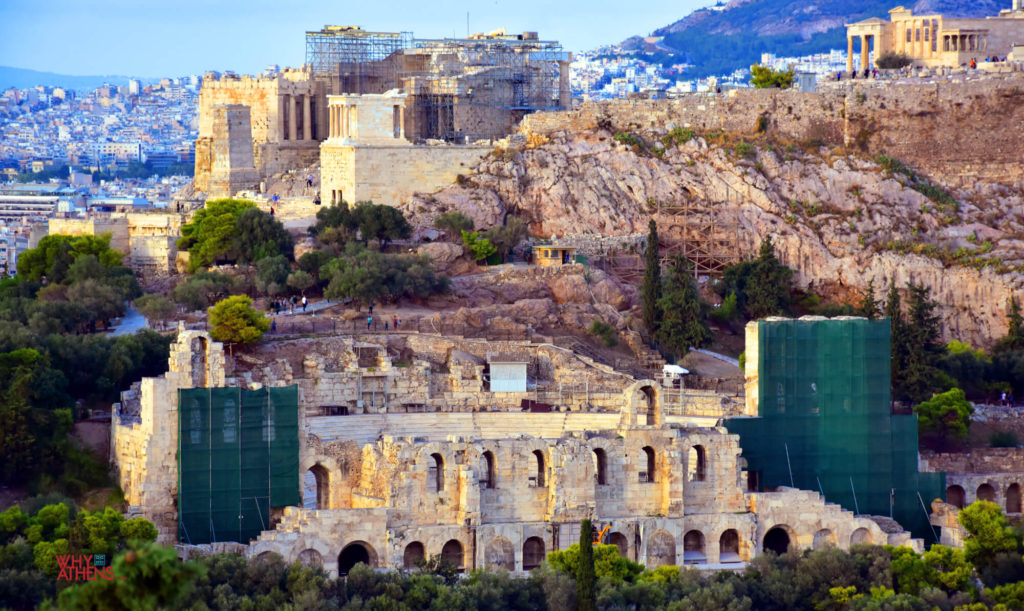
Nestled in the southwest slope of the Acropolis. Photograph: Why Athens
Widely known by locals as simply “Herodeon”, it was built between 160AD – 174AD by the wealthy benefactor of Athens, Herodes Atticus as an ode to his late wife Rigilla. It was the third Odeon to be built in Athens and was distinctively Roman in contrast to the nearby Theatre of Dionysos. With its Roman arches and three story stage building, it was originally partly covered with a wood and tiled roof. The circular orchestra has now become a semi-circle, paved with black and white marble. With 35 rows, the marble auditorium extends slightly beyond a semi-circle with a diameter of 80 metres and today seats 4680 people.
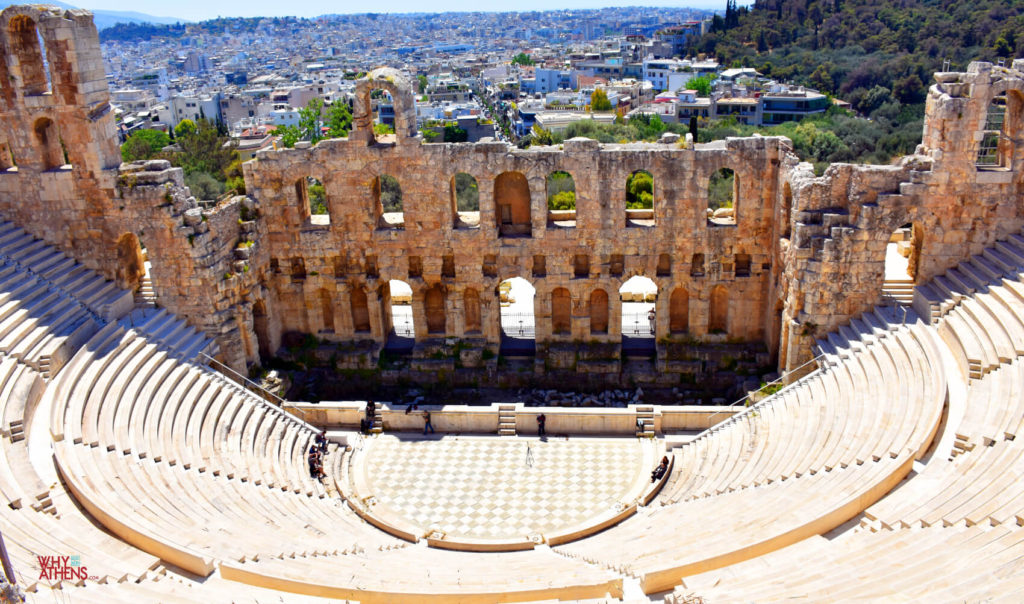
A look from above, the Odeon as it stands today. Photograph: Why Athens
The original structure was destroyed some 100 years after it was built during the invasion of the Erouloi in 268 AD. It become another ruin for a great deal of time particularly during Ottoman occupation. Some restoration and rebuilding took place in the years 1898, 1900 and 1922. In the meantime, the historic site was regularly used as a venue for performances and public events. During German occupation (1941-1944), the Odeon of Herodes Atticus hosted performances by the Athens State Orchestra, as well as performances by the newly formed Greek National Opera with the young Maria Callas, who was then known as Maria Kalogeropoulou, singing the lead in Beethoven’s Fidelio and Kalomoiris’ The Master Builder.
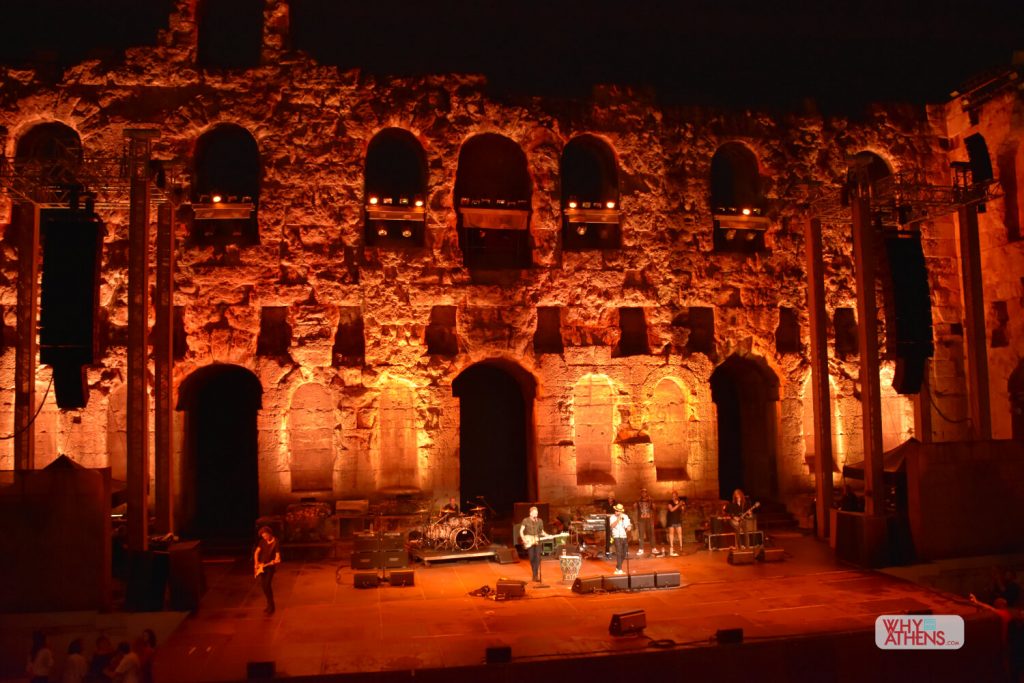
The stage turned orange when Sting performed with Shaggy at the Odeon of Herodes Atticus. Photograph: Why Athens
It was in the 1950s when the city decided to fully reconstruct the venue before its grand opening in 1955 as the prime location for the Athens and Epidaurus Festival. Today, the Odeon of Herodes Atticus remains one of the festival’s main venues and to enter you must hold a ticket to a performance. From the majestic ballets and arias, to ancient Greek tragedies, witnessing a performance here is one you’re unlikely to forget.
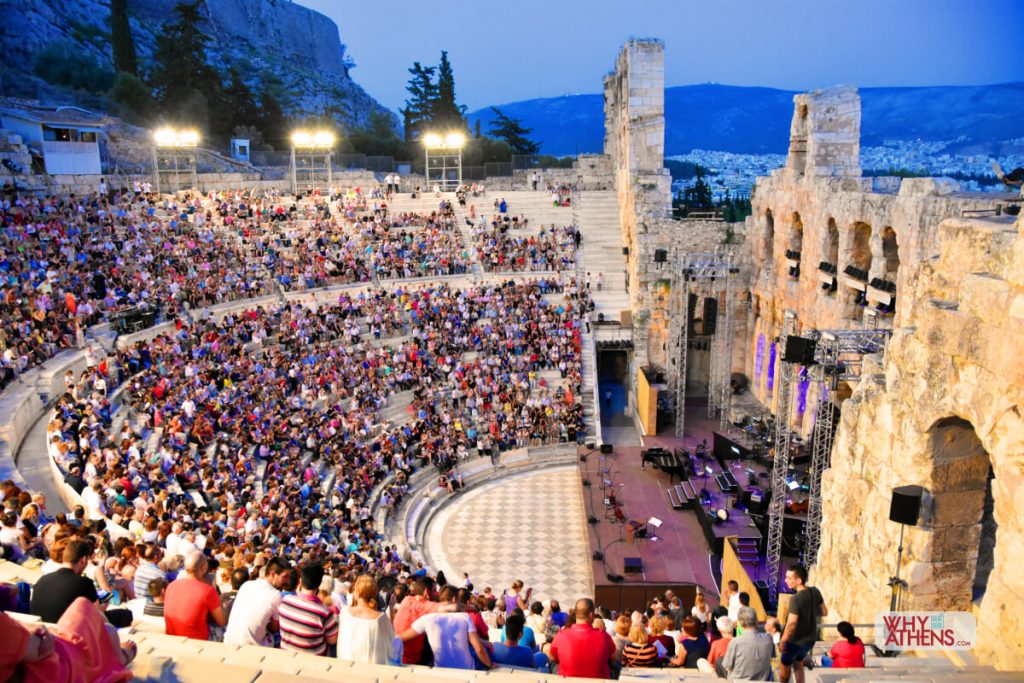
A summer performance draws in large crowds at the Odeon of Herodes Atticus. Photograph: Why Athens
Why Athens Tips:
The perfect selfie spot
You can get a great shot of the theatre during the day as part of your climb up to the Acropolis (you have to enter the site of the Acropolis to do this) and is a great view from above.
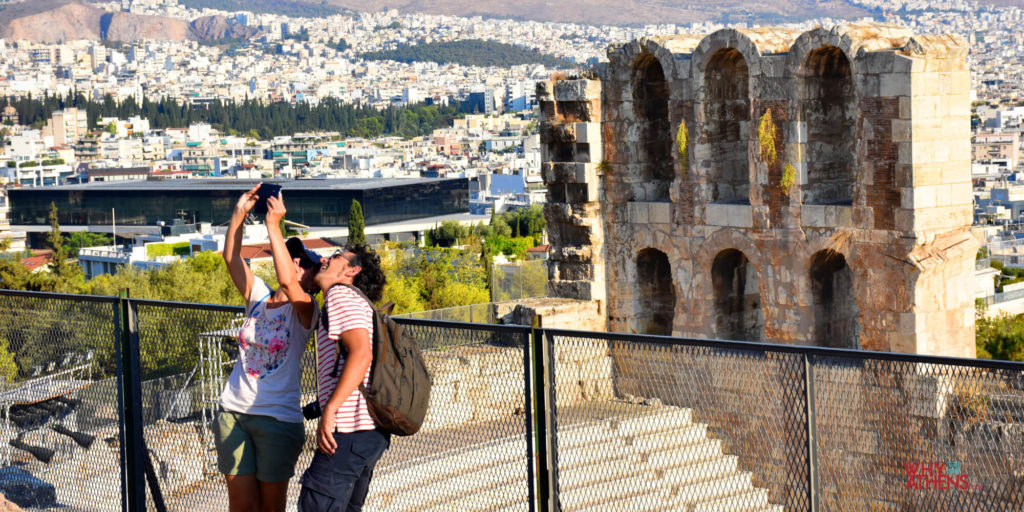
Selfie time from above the theatre. Photograph: Why Athens
Practical info: attending a performance at the Odeon
Getting to your assigned seat can sometimes be tricky as the stairs leading to rows are very steep. Depending on where you are seated, you should expect quite a walk up. Comfortable flat shoes are highly recommended, particularly if you have purchased tickets in the top tier (the theatre also has a no heels policy).
Be sure to check out our events page for information of performances that are scheduled at the Odeon of Herodes Atticus between May and October and also the festival program for the annual Athens & Epidaurus Festival.
If you are unfit to climb stairs, purchase a seat closer to the stage if possible. Disabled access is available to the Odeon, you will find information regarding assisted and special access at the bottom of the ticketing pages for each performance.

